Media | Articles
Classic Car Tires: Everything You Need to Know
There’s a certain “chef’s kiss” feeling when the details on a car are just right. Whether you’ve spotted them at a show, a local cruise-in, or an online listing, period-style tires on a vintage car look great—and they can make a big difference in how an old vehicle drives. Modern tires made specifically for classic cars are even better than the originals.
The terms “modern” and “classic car” may seem incongruous when describing this type of tire, but in reality, they’re a perfect descriptor. A modern classic car tire looks like what might have been mounted to a car’s wheels from the factory when it was new, but they’re manufactured with up-to-date rubber compounds and construction designed to last a long time, hold up to major temperature variations, and provide good traction on a variety of surfaces. These are not your typical reproduction parts.
Here’s what you need to know about this special kind of tire.
Classic Car Tire Basics: What Makes Them Different?

The wheels on many postwar cars can handle standard passenger car tires, even if their sizing isn’t quite the same as what the manufacturer originally specified. For instance, the original tire size on a 1968 BMW 2002 is listed as “165 SR 13” in the owner’s manual; if you roll down to your local big-box tire shop with those numbers, they’ll probably steer you toward the present-day equivalent, approximately a 185/70R-13 tire. Major retailer Tire Rack offers a few tires in that size, ranging from about $72 to upward of $330 per corner. That’s a massive price span, and it might seem tempting to buy four of the cheapest for less than one of the most expensive.
The compound and tread on the cheapest tire in this situation is meant for a modern compact car, like a Toyota Corolla, while the big-buck ones have been designed for a vintage car. They’re both round and black, but that’s about where the similarities end.


Compared to today’s tires, classic car tires have a uniquely shaped carcass—the industry term for the tire’s profile—that results in a smaller contact patch with the pavement below. A thinner patch of rubber on the ground isn’t a boon for traction, but it does make the car easier to turn if the steering system is unassisted. The rounded carcass of a tire meant for a classic car also rolls over differently in hard cornering, which results in handling more akin to what the automaker originally intended.
These tires are also made from modern compounds that are more durable and heat-resistant than what tire manufacturers were able to use in period. They’ll last far longer than the originals, and they’ll provide better traction. Manufacturers assemble them to quality standards simply unachievable back when your car was brand new.
Advancements in synthetic polymers, silica, and carbon black over the last several decades have helped make modern tires grippier, less prone to punctures, and more fuel-efficient than the rubber your classic first wore when it left the factory. Conversely, tire manufacturers face more manufacturing and material-sourcing restrictions today than they did decades ago. Producers have begun to turn to more sustainable ways of producing rubber, an initiative addressing major concerns about the amount of rubber particles in the atmosphere that can be traced to tire dust.
Just what goes into a tire’s construction is proprietary—a closely guarded secret recipe that no tire manufacturer will fully disclose.
“Using a high-quality, full-silica tread compound, we ensure an ideal blend of heritage styling with modern safety and handling performance,” says Patrick Meeley, a representative for Dutch manufacturer Vredestein, which has a wide lineup of classic car tires. “Every aspect of the tread and compound works together seamlessly to achieve this balance.”
Classic car tires also have a tread pattern that looks period-correct. Put tires intended for a Corolla on the BMW 2002 example above and they just won’t look right.
Marketplace
Buy and sell classics with confidence
Bias-Ply vs. Bias-Ply Look vs. Radial Tires
Beginning in the late 1960s and continuing into the early 1980s, automakers phased out bias-ply tires in favor of long-lasting radial tires. If you have a classic car that was built before the phase-out, you may want to weigh the advantages of each construction type.

Bias-ply tires have lots of rubber and soft sidewalls that result in a pillowy ride. However, they give up quickly in hard cornering, tend to make the steering wander at speed, and don’t last very long. Unless you’re willing to live with these major compromises in pursuit of a wholly authentic vintage driving experience, or the only movement your car does is from the trailer to the concours field, you should probably stick with radial tires.
“[Bias-ply] tires replicate the look, feel, and driving characteristics of the original period-correct tires, making them ideal for car shows, Concours events, and hot rods where maintaining historical accuracy is essential,” Coker Tire representative Matthew Millsaps explains.
Then there are bias-ply look tires—modern-construction tires designed for cars from the mid-1970s or earlier that, despite authentic appearances, are radials. They feature an “R” in the tire size descriptor, indicating as such.
“They’re simply the best of both worlds,” Millsaps said.
Shopping For Classic Car Tires

Enthusiasts have a lot more tire choices today for a period-style tire than even a decade ago. A number of tire manufacturers offer classic lines, including Dunlop, Michelin, Pirelli, and Vredestein. Others, like BFGoodrich and Firestone, have licensed their designs to Coker Tire.
Not all classic tires are created equal. Michelin’s Pilot Exalto PE2 tire, for instance, was developed in the early 2000s when the manufacturer watched wheel sizes grow and discovered that owners of 1980s and 1990s “modern classics” with tires sized between 13 and 16 inches had few options. The Exalto range doesn’t emulate a classic tread design, though the small sizes make it an appealing choice for sports cars.
Some choices come down to personal—or period—preferences, like white sidewall lettering (commonly called OWL, or outline white lettering), whitewalls, or Vogues with gold stripes. There’s nothing like Firestone Wide O Oval lettering for a 1977 Pontiac Firebird Trans Am, after all. Such decisions may be very easy to make.

A handful of automakers—Porsche and Mazda, in particular—make it easy. They have partnered with tire manufacturers to develop rubber specifically intended for their vehicles. Tires vetted by Porsche have an “N” marking on them, which major tire retailers will also typically call out. The automaker’s classic division, Porsche Classic, even maintains a tire approval list, though you may want to contact a dealer for the latest iteration.


Ultimately, you should talk to an expert before ordering tires. Coker, Tire Rack, and other specialty retailers have car enthusiasts on staff who can help steer you in the right direction.
“We like to talk cars,” Millsaps says. “And tires.”
Why You Might Not Want Classic Car Tires

Beyond price considerations, there are a few reasons why tires designed for a modern car might be a better fit.
Suppose you plan to use your car for track days. In that case, you may benefit from a dedicated performance tire with a wide contact patch and a rubber compound specifically meant for the heat generated by repeated, grueling use. Of course, that’s all thrown out the window if your car competes in vintage road racing, where period-style tires are a must-have.

Beware, however, that a modern-style tire will wear out your car’s suspension components and wheels in ways you might not expect. That wide contact patch and stiff sidewall that contribute to so much grip will stress the vehicle’s components beyond what its designers intended. You may wind up replacing suspension parts and wheels earlier than expected.
“This can make the ride harsher and reduce the ‘vintage’ driving experience, such as the softer, more forgiving ride and looser handling dynamics some classic cars are known for,” noted Millsaps.
Speaking of wheels, your resto-modded muscle car that rides on 18-inchers will need modern-design tires. Then again, if you’re putting big wheels on your old car, you’re probably not prioritizing ride quality, anyway.
It’s all a matter of preference, but there are more tire choices than ever to create the driving experience, look, and authenticity enthusiasts want. Happy driving!



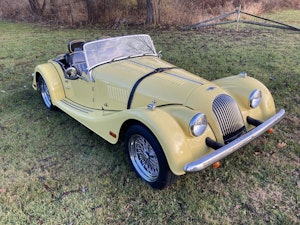
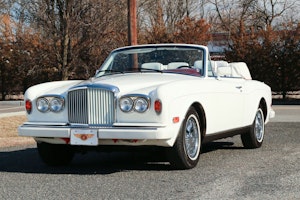
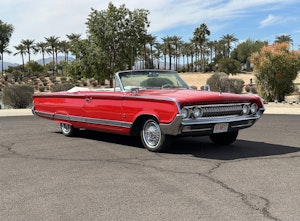
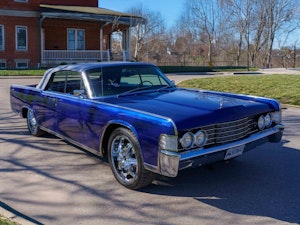

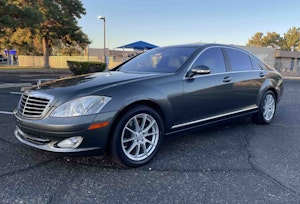
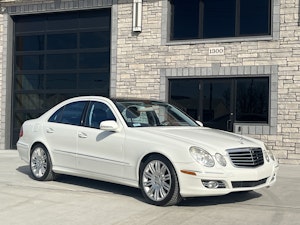
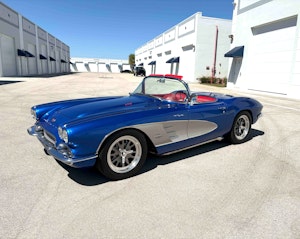















There are too few options for thin redline and thin whitewall tires, and the ones that do exist are insanely expensive. In addition, modern black sidewall tires are littered with logos and designs that don’t look attractive. A smooth sidewall would be greatly appreciated. All at a reasonable price, of course.
Tire stickers.com has your answer. I have used their products several times and am extremely very impressed with their quality!!!!
When I was in my full-size Cadillac phase, I used to put light truck tires on them
i’m leaning in this direction. at 4,600 lbs, getting LT rated tires for my caddy i plan to drive long distances makes sense. still, there are other items needing consideration…
Modern LT tires are designed to ride well and carry a heavy load. Should be good for those big old boat Caddies… Finding a set that looks right may be an issue though, especially if you want white walls.
A question framed from the other direction—old style tires for a modern car.
Wife LOVES her ‘08 Miata! But she’s an old lady and drives like one. What’s highest aspect ratio and hardest rubber that will fit in the wheel wells.
Tired(!) of low profile gumball tires that ride choppy and wear out quick.
Advice?
Talk to the guys at Discount Tire and/or Tire Rack. Ask for their expert on this issue. They’ll help you.
When you talk about Classic tires you have to include inner tubes. Most rims prior to mid 60s were not made for tubeless tires. The engineering included tubes. Yes a lot of tubeless tires have been mounted on the old rims. No problem there, I did that for forty plus years, however, the place where I purchased the current set of Michelin XASs insisted that since my rims were not made for tubeless tires that they install tubes as they were designed for. I felt an immediate positive improvement in driving. It could be because of the new tires, however, I know the authenticity police are happy.
I have the same tyres and tubes on my 1962 Bristol 407 5.2 V8 or 318cc and the difference in handling and comfort is amazing. When new the car was on either AVON Turbo speeds cross ply or Dunlop RS5.
Super comfort for the last few years.
The only difference in the rims is that the older rims do not have a bead lock profile. With tall soft sidewall bias ply tires you conceivably could pop the bead, with radials, you can’t. No issues running a modern radial without tubes. No issues for autocross or track days, much less any type of street driving.
Vredestein needs to make 195/65r14s again. Shocked they carry so many specs for euro cars but not that size.
The Vredestein are what works for my classic Alfa- great tires at speed- predictable and have a smooth transition for traction to sliding- easy to keep the car in a bit of an oversteer and play with the wheel- Chris Harris style- keep replacing with the Vredestein with more of the same for that reason.
Agree 100% Put Vredesteins on my ‘66 Alfa Duetto 4 years ago. They do everything well and are priced right. Wearing very well too.
I must be the only one who didn’t have a great experience with the Vredestein Sprint Classic. I put them on our Mercedes W123 Turbodiesel for the 1970s look. The look was indeed good but the light, flexy carcass had me wondering as soon as I touched them. Once mounted, one almost immediately grew a blister and they only lasted 30,000 km over 7 summers. Given the car, you can be sure I wasn’t asking for any performance out of them yet they disappointed me anyway. I guess I got more of the 1970s experience than I wanted. Or I got counterfeit ones? Keep posting about your positive experiences if you’ve had them though. I don’t want to unfairly disparage any company that’s making specialty parts for our rides!
From one Rob to another – tires in the 70’s were lucky to last 30k km – European were better than North American, but likely the Vredestein’s gave you what they were designed for – and sidewall splice ‘indents’ often give the impression of a blister or bubble, but this is where the tire overlaps and is strongest, and when aired up, creates an indent that on either side can be perceived as blister or bubble – if you never had a problem, this was likely the case. Tires, retail, and manufacturing have been in our family since 1946.
And another commenter was right, check with the experts!
I wonder if your situation was as a couple of others mentioned, you should have had tubes in your tires? Or did you already?
Everyone makes a mistake/lemon on occasion, no one is perfect! You got seven years out of them, so they weren’t too far from the 10 year life span most give for car tires. I’ve run them longer on my old cars that don’t get many miles, but I don’t even look at mileage. Once they start to “check” on the outside it’s time for them to go. The last set I changed out at 12 years old. I’ve seen people driving on 15 year old tires, even older, because “they aren’t worn out yet”. I don’t want a blow-out to wreck or damage my car, and I certainly don’t want to hurt someone else on the road just because I wanted to “get my money’s worth” from a tire!
I’m a bit of a Vredestein loyalist as they have supported some ‘orphan’ size tires for a long, long time as well as make a very high-quality product. My first set of Sprint Classics was on a Tr6 in 1983. I have the Classics on my current Tr6 and the Sprint+ on a 993, Boxster S w/ the 996 getting them this Spring. Great tires, handle very well and good in the wet. My only “gripe” is they exude a bit of brown wax for the first few months…completely normal for tires, but a bit more than others. I emailed Vredestein about the best way to remove and two days later I received a request for pics, then I received a long email including instructions from the engineers about how to clean and what products they thought worked best. That is Customer Service!
That’s a 1971 Trans Am, not a 1977!
Correct!
Was wondering when someone would notice.. thanks
Very good article. I agree on all points and have a few of my own. I own a mobile tire company in Los Angeles and we do a lot of classic cars, partially because I’m a classic car guy with a fleet of Hagerty-insured classics. Here’s what I use:
1919 Ford Model T: Wards Riverside 30×3.5-21. All tires for these are now manufactured in SE Asia, so whether you want treadless white, grey, ‘non-skid’ tread blocks, etc you’re getting effectively the same carcass. For me the Wards look right and work well. You mount these at home with tubes and flaps like a bike tire.
1954 MGTF: Vredestein Sprint Classic 155HR15. Great tire. Looks right, drives right. Killer option. You can run a 155/80R15 (effectively the same size) which is a common Beetle OE-ish sizing, and you can get eg. BFG Radial TA (great tire), but I like the Vred here as the tread edge is more round, as original (good point made in the article there).
1965 Mustang 289 14″: If you’re going for concours original look, there are a variety of interesting options. I go half way, with what I consider a modern tire but the correct period upgrade: BFG Radial T/A with a stagger: 245 rear 225 front. Still a great tire, still made by BFG (this is not true of all older models like, for example, the Silverton that you might want for your original-spec 50s/60s sedans). White letters out. Looks right, drives great. Only option I would consider is letters in, although Cooper Cobras and Firestone are interesting options.
1967 MGB 14″ wires: Vredestein Sprint Classic again, here in 165HR14. Lots of people use a more modern (and available) 175-width radial, but you lose the light steering and balance (as the article notes). I’ve had five of these cars on all manner of tires and this is the best for me.
1967 MG Midget 13″ wires: Getting difficult in this size now. I run a Uniroyal Tiger Paw Touring AS in 145/80-13 but I believe this NLA. Vredestein has a non-vintage option in this size (Quatrac) but other than that everything I now show is tier-5 stuff I recommend you avoid. Again, I like this original width, especially on the wires that are not really that strong for lateral loads. But if you put on a wider Minilite or steelie you have a range of fairly sticky 13″ quasi-race tires. Just beware the glass transition point of those tires – they’re not for use at low temps and a car this light doesn’t build temperature in the tire very well.
1972 Jaguar E-type OTS manual, steel. So here I depart a little from classic tires. You can get both the Vredestein and Michelin XVS in the original 185R15 size, but given the car’s performance and weight, this car was very under-tired in period. I use BFG Radial TA in 215/70R15. White letters in, in this case, although I have run them out for that period Englishman-in-California look.
1977 Ford F-150 SuperCab long: I actually got this truck on the original tires, 235/70-15, which look like car tires now. I use BFGoodrich (see a trend?) All-Terrain TA KO2 in 31×10.5-15, letters out. This is a really balanced look for me, and I like that 1977 was right around the time of the introduction of the BFG All-Terrain so this is period-correct for me. However the period is coming to a close: the replacement KO3 isn’t coming in 15″ sizing, so if you’re on original wheels you’ll have to look to another brand. I’m stocking up.
1980 Porsche 928 (euro, auto) 15″ wheels. I love this version of the 928 as it captures the period GT character of the car, especially with the auto. So I use 15″ phone dials with original 215/60-15 sizing. I also have 16″ saucers with 225/55-16 which opens you up to a world of great UHP tires (I use Micheiln PSAS), but on the 15″ I have BFG Advantage TA. Now NLA. In this size I would now use Yokohama AVID Touring. Best tire in the size, which is a quirky one.
1982 Porsche 930 (grey market). Another car originally under-tired. Stagger is original but on 16×7 front and 16×8 rear I use 225/50-16 front (would be original on the rear) and 245/45-16 rear (although sometimes 245/50-16). This is getting really tricky. The car can over-perform almost any tire. I have BFG R1 slicks on one set of wheels but they’ve aged out. For street I use Fuchs with BFG Comp2+ (with the 50-series rear). If I were to go down to 205/55-16 fronts and 245/45-16 rears, I think the Yoko A008P is a fun period option – one of the original zany performance tires from the 80s and again available.
2005 Pontiac GTO: This is actually my tire test car, and has a variety of rims and tires at any given time. At the moment left front is Michelin CrossClimate2 and right is Vredestein Quatrac Pro, testing wear on these all-weather tires over a year. Rears are Michelin PS AS 3+, still a great tire but not as all-weather as the fronts. don’t try this at home, mixing tires, and especially with winter traction different on the two axles.
And to throw in a modern one: 2013 VW GTI. I try a lot of tires on this car too. Currently on pre-production BFGoodrich Phenom T/A. Watch for this tire, coming out this year. It’s going to be awesome on a variety of euro and tuner fitments. Looks great, performs great, and (a surprise to me) very tractable and pretty quiet.
That’s more than I intended to write, but I’m a tire geek. If you want to geek out or get a recommendation, look up ZipTire in Los Angeles and my guys will help out.
Oh – most important thing with classic car tires (and a point not made in the article that honestly should have been): because people often don’t drive many miles or very hard, classic tires usually age out before they wear out. My rule of thumb is never more than ten years for any classic, and no more than 6 years for any car that really uses the tires. UV radiation makes it worse, but once they add sulphur to the natural rubber to vulcanize and cure the tire, the process NEVER stops. All tires are actively turning to hockey pucks every day. I get guys at car shows showing me their OE tires with date-codes in the 1990s and worse. Don’t be that guy. Those aren’t working right any more.
ACP
“I’m a tire geek.” Verified True.
Good comments on a wide range of vehicles! I run BFG or Michelin on 10 vehicles and 2 motorcycles. Current dilemma is a fitment issue for my 2022 ZL1 Camaro; the OE goodyears are great dry any wetness and your floating! As your 930 does it out performs any tire traction wise up to 70 plus. I am thinking 20×10 wheels with Michelin Pilots AS3… BTW my 2003 2500HD chevy runs Michelin LTX summer and recently mounted BFG KO3 on Alcoa factory wheels(I have 2 sets). They are really quiet for an off road tire. Bummer no 15″. 2015 Jeep Wrangler is waiting for a set to be available mid 2025( 2 sets of wheels for that also). Something not mentioned in the article is alignment specs to use on cars from the bias era. I have 2 68s( Camaro and firebird) and a 69 GTO; I run 1/2 degree negative camber and some positive castor(2-3 degrees) with minimal toe in(got these specs from HO specialties 30 years ago for the GTO). If a shop will not use standard specs, tell them to use 1970-1981 Camaro/Firebird specs which are radial tire vehicles. Another tire geek here. I will find Zip tire before I do the ZL1 fitment. Happy New Year!!
Daniel, I’ve got a 2017 Camaro SS 1LE and put Michelin Pilot Sport 4S on in August. I would have used Continental Extreme Contact Sport 02 but the fronts were on back order and still are.
I’ve got those on a Holden G8 and they work well in that application. On the Camaro the Michelin has the same grip in the dry. No rain data either way and the ride and noise are actually worse. My next door neighbor is a Pilot Sport addict, even uses Michelin condoms, and he swears by them. I wouldn’t.
For the Model T tires (I own 3 and have many friends with them), you are correct that most of the 30×3-1/2 tires are manufactured in the same plant in SE Asia. Whether they are branded as Wards Riverside, Universal T Driver, or Firestone, they are all the same compound. Unfortunately, it seems that in recent years, that compound has been changed – and not for the better. Rear tires (Firestone) on my lightweight T speedster were worn to the cords at 3000 miles. It’s a common complaint. The alternative that many of us are going to is Blockley out of England. You have to order them directly from England (order two at a time to stay below some customs threshold) but the shipping is quick. I haven’t had them long enough to really comment on the wear, but they have the reputation of lasting much longer. They are made in a different SE Asia country, but the story is that Blockley has much better control over the compound and quality. We’ll see . . .
Thank you!
Great reply.
I haven’t decided what tires to run on the 15” period-correct aftermarket rims I’ll be running on my ‘66 VW Fastback, but the Vredstein look like they’d be a good choice.
I think they look great on period-correct Beetles.
Very informative and thank you.
The ’67 MGB’s are supposed to wear 155’s. I think the GT’s that year had 165’s. I can spot the sidewall difference three car show aisles away.
While I’m no expert in the field I’ve always thought those people who mount low profile ( rubber band on rim ) tires on a car with an old style suspension are just asking for trouble. The beating it puts on those parts as you mentioned. Besides that there’s also the real world road conditions to be considered. A set of high performance tires for a modern car might work on a freshly paved piece of asphalt on an older vehicle but on worn less than perfect surfaces? It would seem the effect would be the opposite. Not compliant enough. So much the same as a race tuner will calibrate suspension settings for different condition tracks the same general rule of thumb would apply. Going down one in sidewall is probably just fine however if taken too far. Not to mention the change in speedometer readings even when going from an old school 75 to a 70. Where did I see that Your Observed Speed sign?
Check the sidewall height or overall diameter and come up with something close. Then confirm clearance! I wonder about the wheel selection OEM. We have a Mazda3 Sport GT that comes with 18″ wheels and 16″ still clear the brake caliper.
Personally, I don’t believe in fitting ‘modern’ radial tires on classic cars originally equipped with bias-ply rubber. Naturally, performance is improved but part of the joy of owning a vintage car is how rustic it feels while driving compared to modern mobiles. If you’re willing to upgrade the tires, you might as well swap the anti-roll bars, dampers, exhaust system, and other systems to ‘modernize’ your ride. I prefer the old feel on my old cars.
Bias tires tend to have blowouts more easily, from what I have read and seen over the decades. In my area, potholes are a reality; using bias-plies is just asking for trouble, if one intends to actually put some miles on the car.
I also know, from personal experience (in a low-mileage 1968 Impala), that bias tires tend to follow the “troughs” that wear into an asphalt road (another common problem in my area), making for continuous steering correction on such roads. Very annoying. When I replaced the bias tires with radials, the problem essentially disappeared, and the car was much more enjoyable to drive.
To each, his/her own. Just know the pluses and minuses going in.
My dad had a 74? Dodge Dart 4 door sedan that came with Bias tires. Local garage convinced him to install radials. That car rode and handled like CRAP on the radials for 2 years – until I replaced the shocks with a set of “radial tuned” shocks specified for the then new Dart – 1977? and it totally tamed the car and made it a pleasure to drive. Some cars designed to run Bias tires should NOT be run on radials without changing suspension tuning.
Agree completely. I build Westfield 11/Lotus 11 continuations, and fit them with 15″ wire wheels and Dunlop vintage race tires in 5.00X15 and 4.50X15. This gives the ORIGINAL feel and handling characteristics of the original Lotus 11, with a very stable transition to the classic 4 wheel drift. The usual fitment for the W11s is a 13″ radial, which gives too much grip, making the car more like a later Lotus 7, with a more severe transition to oversteer, at a higher speed. Nowhere near as much fun.
I prefer the original handling, often on vintage bias ply tires. However, many owners of older sport cars have never experienced them on proper bias ply tires.
For my Morgan +8, I use the Avon CR6ZZ tires, which are radials, but offer the same sort of smooth transition without the harsh breakaway at the limit (as my old Vredestines would demonstrate). While the Avons do give the Morgan a bit more grip (well, a lot more grip), they can be tossed around using the 300 HP that my early +8 has, without a scary snap oversteer. They do cost more, but the handling is better, and much more fun.
l agree, Don. Why buy an old car – just to modify it so it’s not like an old car, and doesn’t feel as good as a new one either (unless you spend a zillion dollars at the RIGHT professional shop)?!
Oh no! Someone built something they like and enjoy and you don’t understand it?! Glad you don’t have to drive it. Telling others how to play with their toys is foolish at best. Calm down and let people enjoy their things. Life is too short for this nonsense.
You might be seeking out the old car feeling of driving antiquated technology, but not everyone is–and that’s okay.
To each their own on which tire to choose but I want to point out that wide whitewalls were not offered on new cars after the 1961 model year.
thats bull, i owned quite a few new cars that came with wite walls in the 60s 70s and 80s.
And the 90s…but he is right, the wiiiide white walls seemed to disappear after the 1960s.
He said “wide” whites, meaning the ones that take up most or all of the sidewall, and he’s right.
One problem not listed in the article is the ‘aging out’ of tires on your classic ride. The life of a tire (not treadwear) is considered to be 10 years at the max. Years ago, your daily driver got new tires about every 4 years. Now that classic ride might not see more than a couple thousand miles a year. The tires may have plenty of tread life left and still look good, but may be a blowout waiting to happen on the highway. You spend hundreds for those cool looking retro tires only to have to throw them out before they are worn out. What is the solution? Drive more to get the use out of them? The tires on my ’69 Firebird were 25 years old when I took them off. They were cheap tires that were on it when I bought it in 1999. I don’t drive it much because the OHC 6 in it is hard to get parts for. It rarely goes out on the highway (3.55 gears made for pretty high rpm at 70>>now has T50 5 speed but that needs rebuilding due to a noisy bearing>>parts impossible to find for it). Local shows mostly and joy rides in nice weather.
Tire aging was something I never thought too much about … until I started gathering cars and by default not driving any of them as often. Recently, my ’83 Monte Carlo SS had a blowout on a tire with well over 50% tread remaining. The tire looked great, except for the shredded sidewall that resulted. I owned this car long enough to be the one who put the failing tire set on … 17 years ago.
Luckily, the tire that failed gave a warning (thump, thump thump) while travelling at highway speed, giving me time to slow down and get off on the service road. The tire shredding at 30 mph still did a bit of cosmetic damage when it let go. When it came time to replace the tires, I found it difficult to spend the $1600+ to put Eagle GTs back on, so I opted for a set of modern performance radials for about half the price.
Now I am keeping an eye on the M3 and M5 …
Your article is good but maybe a follow up would be helpful.
1. Don’t forget many use vintage/period correct wheels. Have them checked before mounting new tires. They may not be round, air tight or structurally sound enough to use. Have them checked and repaired if needed.
2. Some popular wheels are reproduced. See the Wheel Vintiques site for example.
3. Can you get clear information and advice about tire aging and replacement? This topic is debated frequently online and it would be good to reach out to tire manufacturers and other professionals to come to a consensus on this.
Thanks!
I recall the major improvement in ride quality and harshness when my dad replaced the bias tires with radials on his 1969 Chrysler. The ptoblem today is it is extremely hard to find 1″ whitewall 14″ tires for full size cars that dont look like the car is on furniture casters. Please make a full 29″ tall radial!
Back in the day, probably early 70s, I replaced the original bias ply tires on my ’68 Plymouth with radials. The improvement in directional stability was amazing.
I have a 1969 Triumph TR6 running on the Cooker redline radials and they have been great with the original look. They offer great customer service as I had one run flat. Under the extra warranty they have to ship you a new tire and send back the old one adding to the time = $$ to get back on the road.
I think the biggest issue – and one not touched on by this article – is tire age. Tires should be replaced every 8 years. It isn’t dry rot – if you wated for them to dry rot, then you are way, way past time to change. Over time, the volitile compounds in the tire that give flexibility and grip, leech out of the tire. Even when stored in a climate controlled garage. After 8 years or so, the tires are functionally compromised. It is a pain when you need to replace tires that still look new (and have all the dingleberries still on them). Tires my dad put on, now my, MGA still look brand new, but are so old that there is no date on them. Needless to say, they now are just rollers for the winter and when being worked on.
I agree totally, I go to car shows and see many cars with tires that are 10, 15, or 20 Years old. How do you drive your $50, $60, or $70,000.00 car and not be afraid to risk a blow out and destroying your car. When we were 17, or 18, then I get it. But we are older folk, buy some newer tires for sakes !!! I bought Cragers for my Chevelle. The tires that were on them were 10 years old, and looked brand new (even when I had them unmounted), but I was not going to chance it. Gave em to a buddy of mine to use as rollers for his body shop.
For a vintage car you want to drive AND show, you need 2 sets of tires and wheels. Drive the car on current modern tires and show the car on “original” tires – 15 years old if you like, as long as they look good. No need to throw away tires with full tread and all the “dingleberries” just because they age out – but for crying out loud, DON’T DRIVE ON THEM!!!!